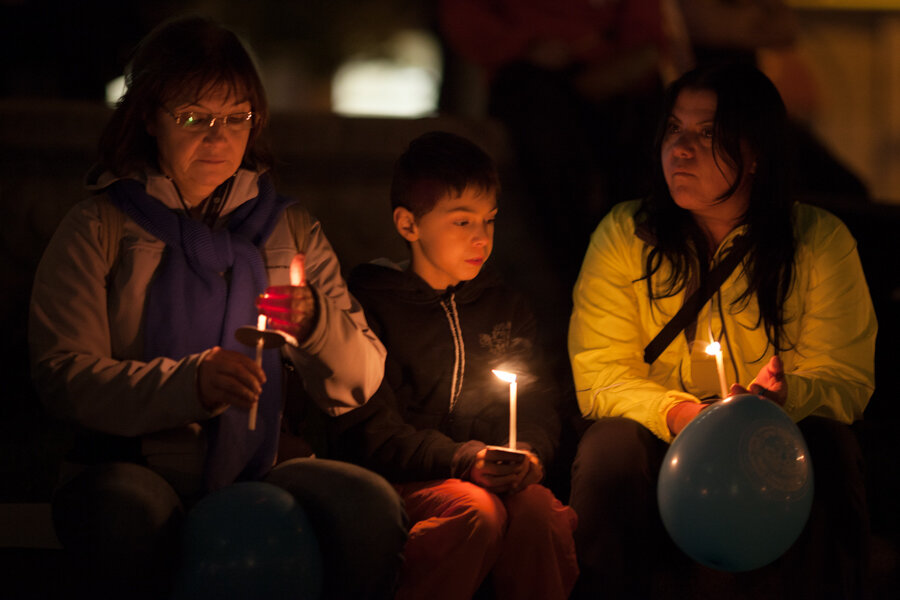On Mother’s Day, Native American Families Are Missing Mothers, Sisters, Aunts, Daughters, Granddaughters
Mother’s Day is a complicated holiday. There are children who have lost their mothers, and there are mothers who have lost their children. For those who have only memories, seeing Mother’s Day cards, flowers and balloons all over can be very painful.
Native American mothers all too often lose children to sex trafficking around “man camps” of workers near oil and gas drilling sites. A 2019 feature film, Wind River, graphically depicts a Wyoming “man camp” and the attendant danger of rape and death for a young Native American woman who is dating a worker.
To Native Americans, both women and the Earth are sacred. For them, the environmental destruction wrought by natural gas and oil development, especially in Western states like North Dakota, Montana and Wyoming, is especially distressing because it is coupled with losses of indigenous women and girls who have been killed or have disappeared. Men and boys are missing or murdered, too.
In a study that surveyed 71 U.S. cities, the Urban Indian Health Institute found that in 2016 alone, there were 5,712 reported cases of missing or murdered indigenous women and girls. Only 116 of those cases appear in the Department of Justice database. A National Institute of Justice report, also from 2016, found that more than four in five Indigenous women had experienced violence during their lives. In 2017, the Centers for Disease Control and Prevention reported that homicide was the fourth leading cause of death for American Indian and Alaskan indigenous girls ages 1 to 19. The CDC also found that murder was tied with cancer for the third leading cause of death among indigenous men and boys.
People gather in a vigil in 2013 for missing or murdered indigenous women and girls. Wikipedia
A new documentary called Say Her Name, funded by the Coushatta Tribe of Louisiana and narrated by a young tribal member, Juliet Hayes, brings home the suffering of Native American families just north of Wyoming in Big Horn County, Montana, and the town of Hardin, the county seat on the border north of Crow and Northern Cheyenne land. Say Her Name looks at the cases of four teenage girls who are missing. Two have been found dead, but no murder charges have been brought.
Big Horn is not far from oil and gas country in Montana, Wyoming, and North Dakota. Because of two major highways that cross the county, one east-west and the other north-south, Big Horn also is a center of methamphetamine production and distribution. In Say Her Name, one indigenous woman says, “Anyone walking along (those highways) can be snatched.”
Hardin’s population is about 3,500. Big Horn County is home to about 14,000. But here, 32 Native American women and girls have gone missing in the last 10 years, along with 25 indigenous men and boys. Of those missing, 29 are under 18.
Hardin and Big Horn are “an epicenter” of these cases, according to the Sovereign Bodies Institute, a Northern California nonprofit that monitors these cases of missing and murdered indigenous women and girls. Throughout Montana, 134 indigenous women and girls are documented as missing, and the actual numbers probably are higher.
One murdered teenager is Kaysera Stops Pretty Places, a Crow and Northern Cheyenne girl who had just turned 18 the week before she vanished in 2019 during Crow Fair, an annual celebration in mid-July. On Aug. 29, a passerby found a body in broad daylight in a backyard off a busy street in downtown Hardin. Local law enforcement took two weeks to identify it as Kaysera’s.
Before the pandemic, Yolanda Fraser, Kaysera’s paternal grandmother and her legal guardian, protested for “Justice for Kaysera” with supporters outside the Hardin courthouse. Law enforcement won’t answer Fraser’s questions and maintains Kaysera died of natural causes.
Crow teenager Selena Not Afraid was 16 when she disappeared on Jan. 1, 2020, at a remote rest area on Highway 90, the north-south highway that crosses Big Horn County. On Jan. 20, her body turned up behind the rest stop, an area that already had been searched thoroughly. In Say Her Name, Northern Cheyenne president Donna Fisher maintains the body was dumped later: “Someone put it there.”
In two other stunning scenes In Say Her Name, Hayes requests a document about Kaysera’s case from the district attorney’s office. Then she asks a White police officer for some missing person posters for Kaysera. In both cases, she is pointedly ignored. Besides racism, another factor may be at work. Just as law enforcement and the Ku Klux Klan had overlapping membership in 1950s and 1960s Mississippi, could Big Horn County police and others in local law enforcement be involved in the meth trade?
According to David Sickey, chairman of the Coushatta Tribe of Louisiana, executive producers of Say Her Name, the documentary will be available online, free of charge. Sickey said the Coushatta produced the film to keep missing and murdered indigenous women “front and center” for lawmakers, media, and the public, and to focus on the fact 86 percent of these cases in Montana remain unsolved.
Ann Marie Cunningham is a Columbia University Lipman Fellow for 2020 who will be working with the Mississippi Center for investigative Reporting. She is a veteran journalist/producer and author of a best-seller. Her work has appeared in The New York Times, Los Angeles Times, Technology Review, The Nation and The New Republic. Contact her at amc@mississippicir.org.


